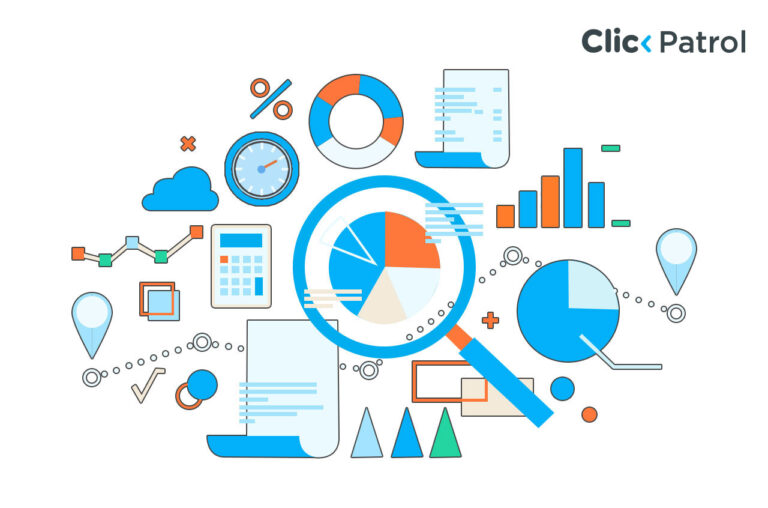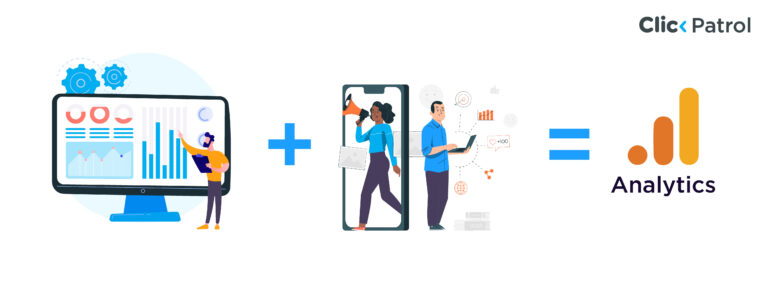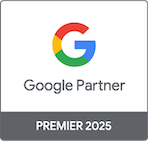
What is Criteo? A deep dive into the Ad Tech leader powering programmatic advertising
Abisola Tanzako | Jul 24, 2025

Table of Contents
- Criteo overview: What it is and why it matters in 2025
- How Criteo works: The tech powering personalized ads
- The mechanics of Criteo’s technology
- Criteo’s offerings
- Why Criteo stands out in digital advertising
- Advantages of Criteo for businesses
- Criteo by the numbers
- Criteo vs. competitors
- Challenges facing Criteo
- Criteo’s future outlook
- How to get started with Criteo
- Criteo’s role in modern advertising
- FAQs
Criteo is a leading market player in digital advertising, revolutionizing how brands connect with their consumers. The French startup Criteo, founded in Paris in 2005, has evolved into a world-class ad tech company.
Its annual financial report shows that its 2023 revenue reached $1.95 billion. Based on its corporate overview, the advertising network connects with 2.5 billion users monthly while working with more than 20,000 advertisers worldwide.
Criteo’s official data demonstrates the broad customer reach and significant market impact of its advertising platform. This guide explores Criteo’s platform, features, unique value proposition, and how it compares to other ad tech providers.
Criteo overview: What it is and why it matters in 2025
Criteo was launched by founders Jean-Baptiste Rudelle, Franck Le Ouay, and Romain Niccoli, who originated the business to build e-commerce product recommendation systems.
In 2005, the company initiated operations by launching its platform, and then transitioned to advertising technology while developing its retargeting capabilities in 2010.
The increasing market demand for data-driven advertising activities has led Criteo to flourish, as it can transform user behavioral patterns into precise advertising campaigns.
How Criteo works: The tech powering personalized ads
Criteo is an advertising platform that leverages artificial intelligence (AI) and machine learning to deliver targeted, performance-based advertisements.
Dynamic retargeting is the leading service at Criteo, delivering personalized advertising through AI-powered data analysis of purchase intent and user behavior.
In addition to its principal offering, Criteo provides advertisers with various tools to optimize their return on investment (ROI).
The mechanics of Criteo’s technology
Here is the breakdown:
- Data gathering: Criteo monitors user activities on partner websites and applications, including product page views and cart abandonments.
- AI Analysis: Using user behavior forecasts, machine learning technologies optimize advertising targeting algorithms.
- Real-time bidding (RTB): Through real-time programmatic auctions, Criteo’s ad platform operates at the millisecond level to place successful bids for ad impressions.
- Ad serving: Your successful bidding allows Criteo to create personalized advertisements that display the jacket you previously visited on a blog page.
Criteo’s offerings
Its solutions include:
- Dynamic retargeting: Re-engages past site visitors.
- Customer acquisition: Targets new users similar to existing customers.
- Audience match: The system uses customer data to precisely segment groups.
- Sponsored products: Boosts product visibility on e-commerce platforms. The company’s service portfolio helps firms maximize their advertising activities efficiently.
Why Criteo stands out in digital advertising
The digital market predicts that Criteo will continue to influence a $740 billion advertisement industry by 2025, based on Statista’s 2023 projection. Here’s why it’s exceptional:
- Precision personalization: Every day, Criteo processes extensive dataset volumes that generate display ads with three times the click-through rates of regular display ads, based on its analytics sources.
- Results-oriented approach: The company’s CPC and CPA performance models align with e-commerce operations because 70% of its clients operate in this sector, as stated in its 2023 annual report.
- Privacy-ready innovation: The company adjusted its operations to GDPR requirements and declined cookie usage, allowing non-cookie solutions to generate 35% of its 2022 revenue.
- Cross-platform reach: Criteo’s commercial operations span websites, apps, and marketplaces, resulting in a broader potential reach than niche platforms can offer.
- Scalability: The platform extends its network to benefit 2.5 billion users monthly, which makes it ideal for worldwide advertiser reach.
Advantages of Criteo for businesses
Through its solution, Criteo provides substantial advantages that businesses receive:
- Higher conversions: According to Invesp’s 2023 research, users who receive retargeted ads tend to buy at a 70% higher rate.
- Cost-effective: Companies benefit from performance-based pricing because it enables them to allocate advertising costs more effectively. Due to its network reach, Criteo connects with 2.5 billion monthly users.
- Insights: The detailed analytics displays enable businesses to access data, delivering actionable campaign information.
- Flexibility: Criteo offers various solutions that can serve startups and businesses of all sizes.
- Quick setup: The speed of campaign launch enhancement comes from seamless onboarding and integration capabilities.
Criteo by the numbers
Key statistics illustrate Criteo’s dominance:
- Revenue: $1.95 billion in 2023
- Clients: Over 20,000 advertisers
- Reach: 2.5 billion users monthly
- Impressions: 120 billion annually
- Staff: Over 3,500 employees
- Retail focus: 70%+ of clients in e-commerce
- Non-cookie revenue: 35% of 2022 earnings
Criteo vs. competitors
Criteo operates against top competitors, including Google Ads, The Trade Desk, and Facebook Ads.
- Google Ads: The search market belongs to Google Ads, yet Criteo demonstrates superior display and retargeting abilities throughout the internet.
- The Trade Desk: The company integrates personalization features into its DSP system concurrently with offers in The Trade Desk DSP.
- Facebook Ads: The social targeting rules apply to Criteo as it provides platform convergence capabilities across secured online domains.
- Unique niche: Criteo demonstrates better performance capabilities for retailers than brand-building awareness.
- Data edge: AI-driven targeting insights the platform delivers surpass those of multiple DSPs.
Challenges facing Criteo
Criteo faces several obstacles:
- Privacy scrutiny: In 2018, GDPR authorities imposed a €60,000 fine on the company for data breaches, but its compliance standards have since improved.
- Cookie decline: The disappearance of third-party cookies from the market creates risks for their current retargeting platform.
- Narrow focus: When a company solely focuses on conversion activity, it weakly supports brand recognition marketing efforts.
- Competition: Giants like Google and Meta challenge its market share.
- Ad fatigue: Repeated targeting of users through retargeting can produce adverse reactions, which diminishes its effectiveness.
- Regulatory shifts: Global privacy regulations require businesses to maintain consistent adaptation measures.
Criteo’s future outlook
Criteo prepares for upcoming market trends, as Grand View Research indicates that this landscape is expected to expand by 14.5% annually between 2023 and 2030.
- AI investment: Advances in machine learning technology will enable more precise targeting.
- First-party data: Moving to privacy-secure solutions will boost the strength of its product range.
- New verticals: The company is pursuing travel and finance businesses to expand its customer base.
- Contextual targeting: Cookieless strategies ensure future relevance.
- Global growth: New market expansion opportunities are expected to increase the number of users to 2.5 billion.
How to get started with Criteo
To use Criteo:
- Register: Contact their sales team online.
- Integrate: You need to embed tracking tags into the pages of your website.
- Define Goals: Set a budget and objectives.
- Launch: Build and start your campaign.
- Optimize: Adjust based on analytics.
Criteo’s role in modern advertising
Criteo represents more than just advertisement technology, as it sets custom and performance-based marketing standards. For nearly two decades, the digital advertising platform Criteo established its Parisian beginning while growing to serve 2.5 billion global users.
Its extensive impact on the market stems from generating $1.95 billion in revenue while serving over 20,000 advertisers.
Criteo’s advanced tools and vast scale serve businesses wanting exceptional online success. Are you curious about whether Criteo is a good fit for your business? Explore Criteo’s solutions or book a demo to see real results.
FAQs
Q.1 Is Criteo only for e-commerce?
The current clientele base primarily consists of retail clients, representing more than 70% of the total, but Criteo continues to expand its operations into the travel and finance sectors.
Q. 2 How does Criteo handle privacy?
Its GDPR-compliant data processing and first-party information collection resulted in 35% of annual non-cookie revenue in 2022.
Q. 3 Can small businesses use Criteo?
Its adaptable system enables both small and large businesses to gain entry through a straightforward onboarding process.
Q. 4 Can you clarify the dissimilarities between Criteo’s operation and Google Ads?
Criteo performs open-web retargeting, while Google focuses on managing search engine activities.





